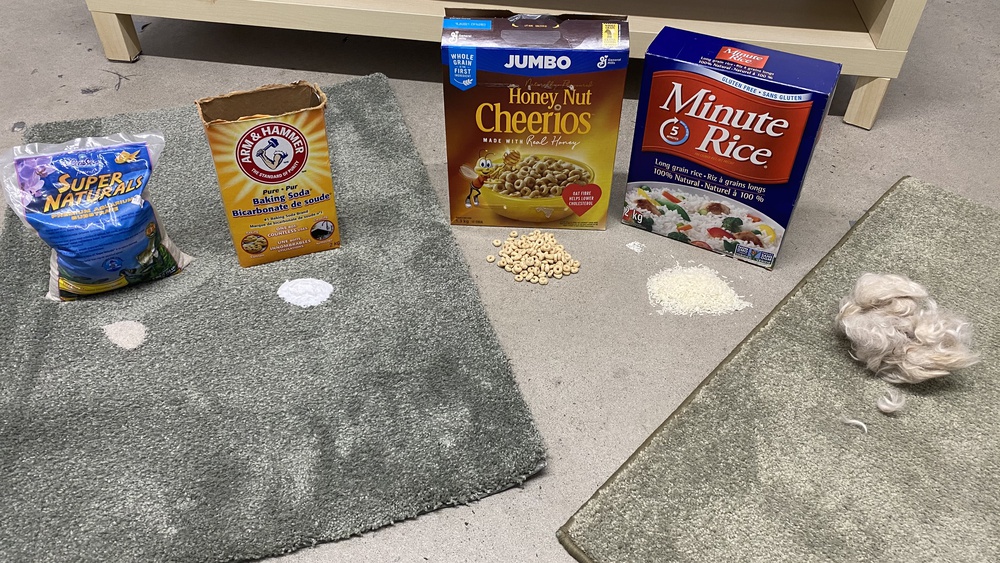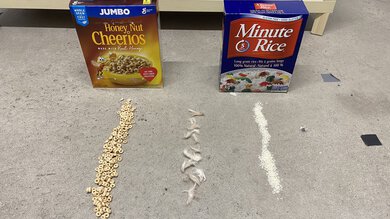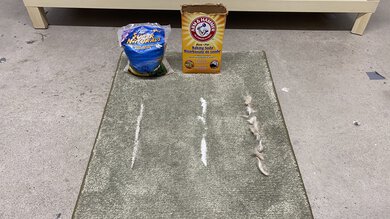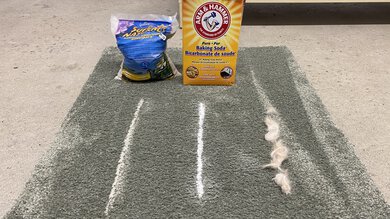- Table of Contents
- Intro
- When It Matters
- Our Tests
- How To Get The Best Results
- Conclusion
- Comments
If you're shopping for a vacuum, it can be hard to know what to look for. Vacuums come in several designs and configurations, and are often loaded with features, from simple design touches like headlights to advanced laser navigation systems that map your home. However, for many people, the most important factor in choosing a vacuum is cleaning performance. To make a decision, you can compare the suction settings and cleaning modes of various models, the tools and brushes that come included, and even the advertised suction power or wattage if it's available, but none of that information on its own tells you how well a vacuum performs. In each of our performance tests, we measure what proportion of a pre-measured volume of debris a vacuum sucks up, so you can get an idea of each model's cleaning ability in different situations.
Test results
When It Matters
Because most vacuums perform differently on bare floors versus carpets or do better with one kind of debris over another, it's important to know how a model performs in specific scenarios. In our reviews, you can see how each model performs in several situations, which can give you an idea of whether a vacuum is a good choice for cleaning up after shedding pets or keeping carpets pristine.
Our Tests

We test performance by measuring how much pet hair and debris it picks up from various surface types. We repeat the process on each surface type with three categories of debris: pet hair, small debris, and large debris. We only test one type of debris at a time.
First, we weigh the empty dirt compartment. Then we measure a specific amount of debris and spread it out on the surface we're testing, whether bare floor, low-pile carpet, or high-pile carpet. The debris is spread evenly over a space three feet long and about as wide as the vacuum head. When the test is on a carpet, we rub the debris into the fibers a bit after pouring it on, to mimic the way debris gets worked into those surfaces over time.
We perform a set number of back-and-forth passes with the vacuum, depending on the surface and debris type, then weigh the dirt compartment again, which allows us to calculate the percentage of debris that it sucked up. This process is repeated three times with each type of debris on each surface type. We always set the vacuum to the most appropriate settings for the task, so if the vacuum has a 'bare floor' or 'hardwood' setting, we use that for the bare surface tests.
Because some vacuums tend to lose suction as their dirt compartment or dirtbag fills up, we repeat the whole process, this time starting with a partially full dirt compartment. We fill the dustbin to the largest capacity it can fit out of these specific amounts: 0.25L, 0.75L, 1.5L, 3L, or 6L. Again, we test the vacuum on each surface type with each of the different debris types, repeating the test three times in each scenario. If the vacuum sucks up less debris than it did with an empty dirt compartment and the difference is at least 10 percent, we repeat the tests once again, but this time with the dirt compartment filled to the next smaller capacity. For example, if the vacuum has a total dirt compartment volume of 4L, it's initially filled to 3L for this test. If its performance drops significantly at that point, the tests are then repeated with the dirt compartment only filled to 1.5L. This way, you can get an idea of how full the dirt compartment can be before it starts to affect the vacuum's performance.
Between every set of passes, for all the tests, we clean the floor or carpet with another vacuum that we already know performs well on that surface type. We also check the vacuum to ensure the brushroll, hose, and other parts are clear of any debris that may have become caught during the previous test. This ensures that leftover debris on the surface or in the vacuum won't affect the rest of the results going forward.
Bare Floor
Small debris: >95%

Bare floors may be the easiest surface for most vacuums to clean, and many models deliver their best performance on this surface type. However, plenty of factors can affect a vacuum's performance on surfaces like linoleum and hardwood. A brushroll that can't be switched off may scatter debris around the room, for example, and a vacuum with a too-small entry, like the handheld eufy HomeVac H11, may not be able to suck up bulky debris because it doesn't fit.
For the bare floor tests, we use 25 grams of cereal for the large debris and 25 grams of rice for the small debris, and one gram of pet hair. We complete two back-and-forth passes for pet hair and one for each of the other debris types. If it's easy to do so, like with some upright vacuums, we lift the vacuum head on the way back.
Low-Pile Carpet
Small debris: >65%

Carpets can be more difficult to clean with a vacuum because dirt and debris tend to get worked into the fibers. Some vacuums have a surface type adjustment feature that changes the suction power or height of the vacuum head to suit the surface type, which can help with cleaning carpets. Many have a brushroll that agitates the carpet to help dislodge more debris, while others, like the Miele Complete C3 Alize PowerLine, deliver amazing performance on low-pile carpets without one. You may want to look at a vacuum’s performance on this surface type to know how well a model can clean your car interior.
To test performance on this surface type, we use the same section of low-pile carpet each time and repeat the test separately with one gram of pet hair, five grams of sand for the large debris, and five grams of baking soda for the small debris. For each test we complete three back-and-forth passes with the vacuum for both the sand and baking soda tests and two passes for the pet hair test.
High-Pile Carpet
Small debris: >60%

High-pile carpets have long fibers that give them a fluffy, plushy look, but they tend to be the hardest surface for vacuums to clean. Debris gets worked into the deep pile, making it harder to suck up, and long fibers can get wrapped around a vacuum's brushroll. Some vacuums that deliver a good performance on other surface types do a terrible job of cleaning high-pile carpets, like the Sanitaire PROFESSIONAL Upright, while some budget-friendly models like the Shark UltraCyclone Pet Pro+ are surprisingly effective. If you have many high-pile carpets in your home, it's a good idea to look for a vacuum that delivers a solid performance on this surface.
We test all of our vacuums on the same high-pile rug and repeat the tests with the same types and amounts of materials we use for the low-pile carpet test: one gram of pet hair, five grams of sand for the large debris, and five grams of baking soda for the small debris. Similarly to the low-pile carpet test, we do three back-and-forth passes over the sand and baking soda and two passes over the pet hair before recording the results.
How To Get The Best Results
To get the best performance out of your vacuum, you should be sure to use the right settings and tools for the area you're cleaning. We always list the settings we used to test each surface type with the results in our reviews. It's also a good idea to make sure your vacuum is well-maintained and that you replace parts when necessary. Some vacuums don't perform as well when their dirt compartment is partially full, so you may also want to empty the dirt compartment often as you clean or look for a model that has a consistent performance even as it fills up.
Conclusion
Most people aren't likely to be happy with a very well-built or feature-packed vacuum unless it has a good cleaning performance. The performance test gives you an idea of how well a vacuum works on a given surface type. Whether you're looking for the vacuum with the very best performance, a cheap vacuum that does a surprisingly good job on carpets, or a portable handheld that can tackle bulky kitchen debris, it can give you an idea of whether a vacuum is suitable for your needs.